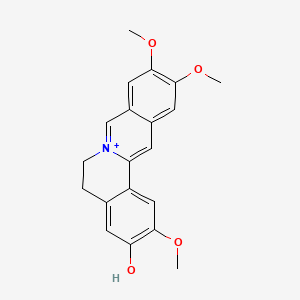|
Name: Levo-alphacetylmethadol
Type: Opioid
AKA: LAAM, long acting methadone, levomethadyl acetate

|
|
II. Natural Derivative
Synthetic substance, no natural derivative
 |
|
III. Chemical Profile (IUPAC name)

|
|
IV. History
Levo-alphacetylmethadol, a synthetic opioid, was developed in the 20th century. It is used for pain management and is studied for its efficacy and safety profile in treating severe pain.

|
|
V. Legal Information
Levo-alpha-acetylmethadol is an opioid used for pain management. It is controlled under various national laws, including in the United States where it is classified as a Schedule I controlled substance due to its abuse potential. Similar controls are in place globally. [Source: UNODC].
US Federal Schedule - II
Schedule II drugs, substances, or chemicals are defined as drugs with a high potential for abuse, with use potentially leading to severe psychological or physical dependence. These drugs are also considered dangerous. Some examples of Schedule II drugs are: combination products with less than 15 milligrams of hydrocodone per dosage unit (Vicodin), cocaine, methamphetamine, methadone, hydromorphone (Dilaudid), meperidine (Demerol), oxycodone (OxyContin), fentanyl, Dexedrine, Adderall, and Ritalin.
Key US Federal Policies:
Controlled Substances Act. Public Law: Public Law 91-513 (text can be found on GovInfo) (https://www.dea.gov/drug-information/csa). Date enacted: October 27, 1970.
|
|
VI. Physical Effects
Levo-alpha-acetylmethadol (LAAM) is a synthetic opioid used for opioid dependence treatment. It causes sedation, respiratory depression, and constricted pupils. Short-term use is effective for managing opioid dependence, but long-term use can lead to addiction, tolerance, and severe health issues. Overdose risks include fatal respiratory depression. Safe use involves strict dosing and medical supervision. Recent research highlights its efficacy and risks compared to other opioid treatments.  |
|
VII. Psychological Effects
Levo-alpha-acetylmethadol (LAAM) provides pain relief and mood elevation. Immediate effects include euphoria and cognitive impairment. Long-term use can lead to dependence, tolerance, and withdrawal symptoms. Chronic use is associated with mood disorders and cognitive decline. Recent studies highlight its effectiveness but also emphasize the risks of addiction and cognitive effects.
 |
|
VIII. Culture
Levo-Alpha-Acetylmethadol (LAAM) is an opioid used in the treatment of opioid dependence. It has no historical or cultural lore but is significant in modern medicine. It was developed as an alternative to methadone and has played a role in addiction treatment. Proponents highlight its benefits in managing opioid dependence, while opponents caution about its side effects and the challenges of long-term use. Its cultural impact is tied to the broader conversation about opioid addiction treatment and the development of alternative therapies.
 |
